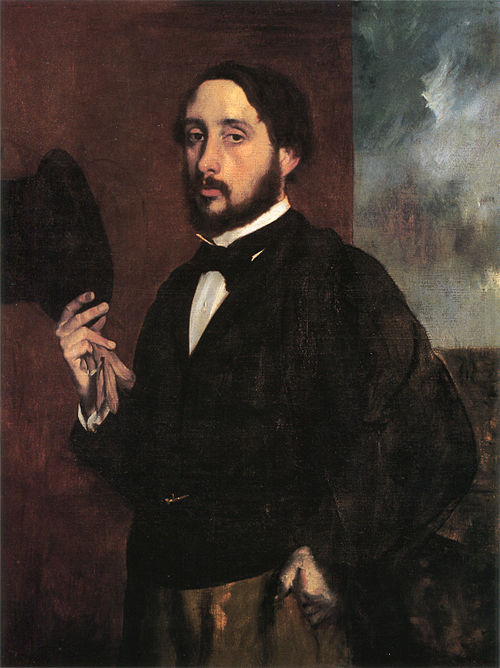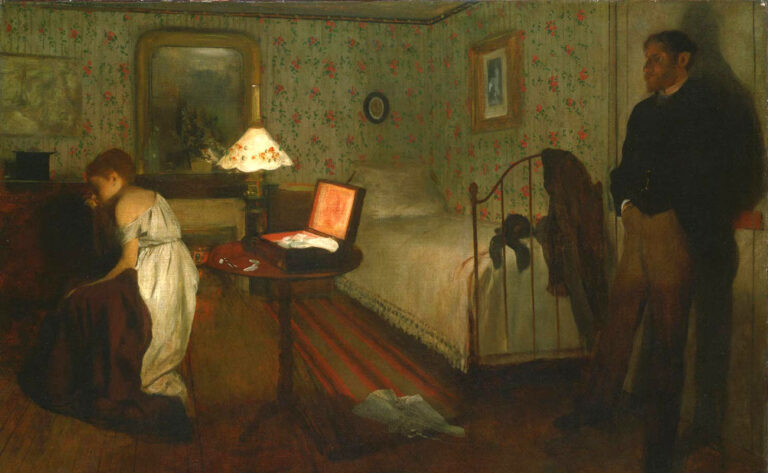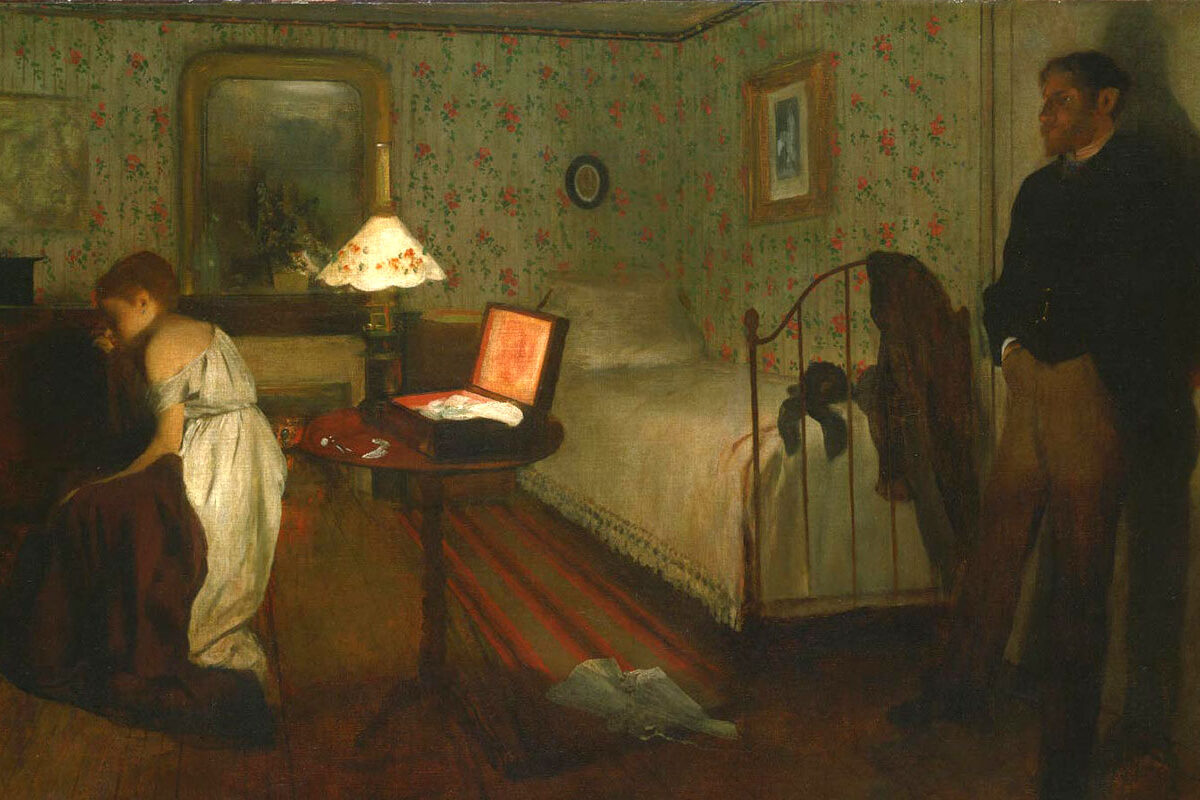
Dégas’ brilliant rendering of perspective pulls the viewer into the mystery of what has taken place in what appears to be a woman’s bedroom. At the foot of the single-width bed, a coat is thrown over the metal bedpost frame. In the right foreground a bearded man leans against a closed door. His shadow looms behind him, large against the door. His shadow is generated by the single small lamp set upon a small round table near the center of the room. On the floor next to the table lies a piece of cloth or clothing (said to be a corset, p.674 of reference below).
Turned, bent away from the man, partially kneeling on the floor at the other side of the room, is a young woman whose left shoulder and upper back are bare. The short sleeve of her white dress (nightgown?) hangs off her shoulder. She clutches to her body a blanket or drape. In contrast to the man, who stands in semidarkness, the woman’s back is bathed in the light of the nearby lamp.
Clothing strewn on the floor and the looming man posted against a door suggest an assault. Although early 20th century critics did indeed perceive the painting as depicting the aftermath of a rape, that interpretation is not a foregone conclusion. The Philadelphia Museum of Art notes that Dégas referred to this work as “my genre picture” (a picture showing everyday life). The museum states further that “an annotation in a notebook used by Degas in this period provides a clue as to his intentions: ‘Work a great deal on nocturnal effects, lamps, candles, etc. The fascinating thing is not always to show the source of light but rather its effect.’ ” For another discussion of this painting, see Body, Place, and Self in 19th-Century Painting, by Susan Sidlauskas (Cambridge University Press, 2000).
Web image from wikicommons










